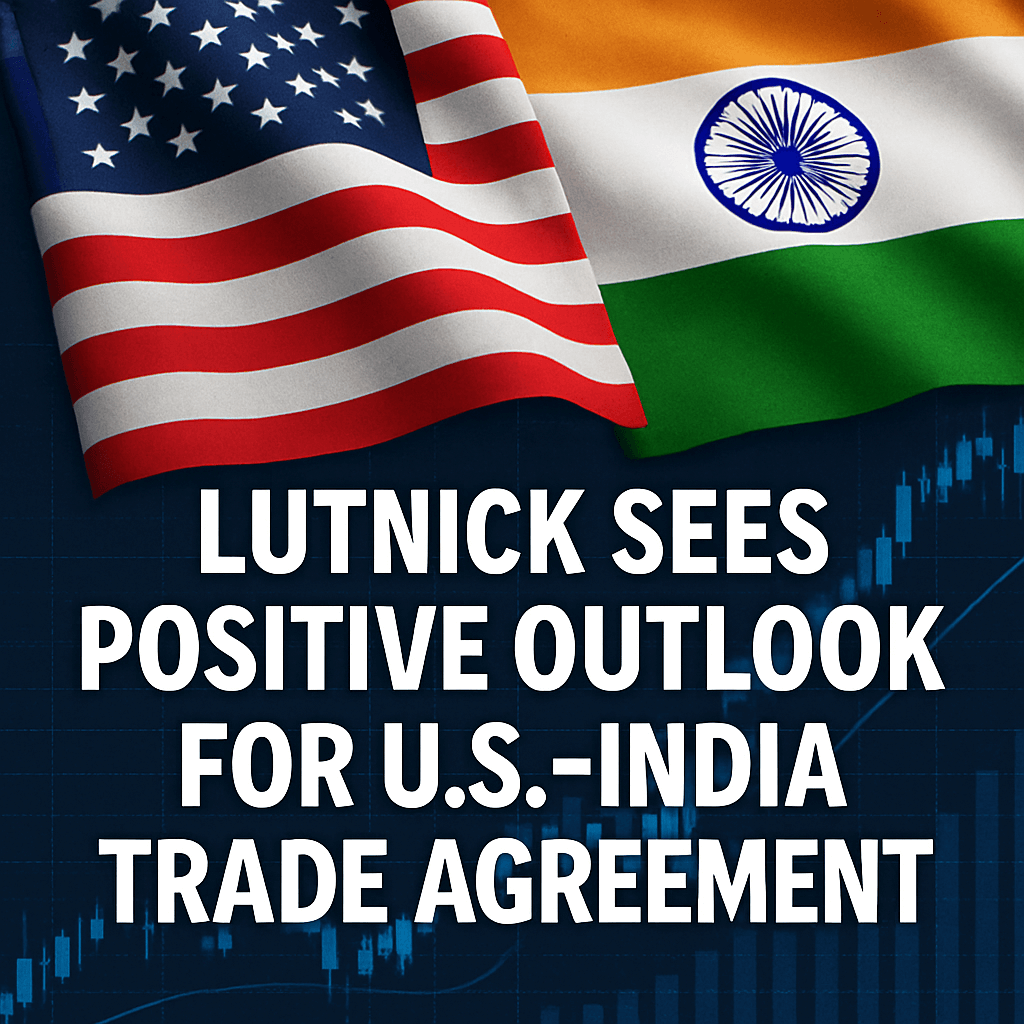Lutnick Sees Positive Outlook for U.S.-India Trade Agreement

Commerce Secretary Howard Lutnick expressed significant optimism regarding the potential for a trade agreement between the United States and India, suggesting that a deal could materialize before a looming deadline in July for elevated tariffs. Speaking at the U.S.-India Strategic Partnership Forum’s Leadership Summit in Washington, Lutnick remarked, “You should expect a deal between the United States and India in the not-too-distant future. We’ve found a place that really works for both countries.”
Negotiation Timeline and Urgency
India was one of the initial nations to commence negotiations for a trade deal aimed at circumventing reciprocal tariffs that U.S. President Donald Trump has threatened to impose. These tariffs, slated to take effect on July 9, are a pressing concern for both parties. In this light, a delegation of U.S. officials is scheduled to visit New Delhi on June 5-6 to advance ongoing discussions.
Timing Implications for India
Lutnick noted that the earlier a country engages in a trade pact, the more favorable the terms will likely be. “Earlier countries get a better deal, that’s the way it is,” he said. He further elaborated that nations attempting to finalize agreements between July 4 and July 9 might face a more congested negotiation landscape. Thus, there is considerable incentive for India to solidify its position ahead of the impending deadline.
Trade Pact Structure and Key Areas of Focus
According to reports, New Delhi is currently working on a three-tranche trade agreement with U.S. officials, with the first tranche expected to focus on critical areas including:
- Market access for various industrial goods.
- Tariff adjustments on select farm products.
- Reduction of non-tariff barriers that hinder trade.
India has adopted a more assertive negotiating posture in recent months, driven in part by legal challenges to its existing trade policies. New Delhi is advocating for the elimination of the baseline 10% tariff and is urging Washington to simplify the proposed rules of origin, which determine where products are made and their eligibility for tariff treatment.
Reducing Trade Deficits
Lutnick emphasized that negotiations include discussions on lowering tariffs to a level deemed “reasonable and appropriate” to enhance bilateral trade. Additionally, addressing the U.S. trade deficit with India remains a central theme in the talks. “I will treat you incredibly kindly on the things that are important to you, and you bring down tariffs and give us market access. And let’s find a proper place in the middle,” he stated.
The Role of Leadership and Bilateral Relations
The strong personal rapport between President Trump and Prime Minister Narendra Modi has facilitated a conducive environment for trade negotiations, Lutnick remarked. This relationship has led to a shared objective of boosting trade between the two nations to achieve a goal of $500 billion by 2030, a substantial increase from the current level of approximately $127 billion as of 2023.
Strategic Purchases and Military Ties
To ameliorate the trade imbalance, India has committed to increasing its purchases of U.S. defense equipment, oil, and gas. Although historically, India has sourced military hardware from Russia—a practice that has raised eyebrows in Washington—Lutnick noted that Indian officials are making strides to address these concerns. “There were certain things that the Indian government did that generally rubbed the United States the wrong way. For instance, they generally buy military gear from Russia,” he commented. However, he added that Trump has been vocal about these issues, and the Indian government is responding proactively.
Potential Challenges Ahead
While optimism surrounds the potential trade deal, there are challenges to consider. Both nations must navigate complex geopolitical landscapes that could influence their negotiations. Additionally, domestic audiences in both countries may have differing priorities and preferences, which could complicate consensus.
Conclusion
As the June visit approaches, the trade negotiations between the U.S. and India will likely gain momentum, with both sides keenly aware of the impending tariff implications. The outcomes of these discussions will not only affect bilateral trade dynamics but will also play a pivotal role in shaping the broader geopolitical landscape.
Source: fortune